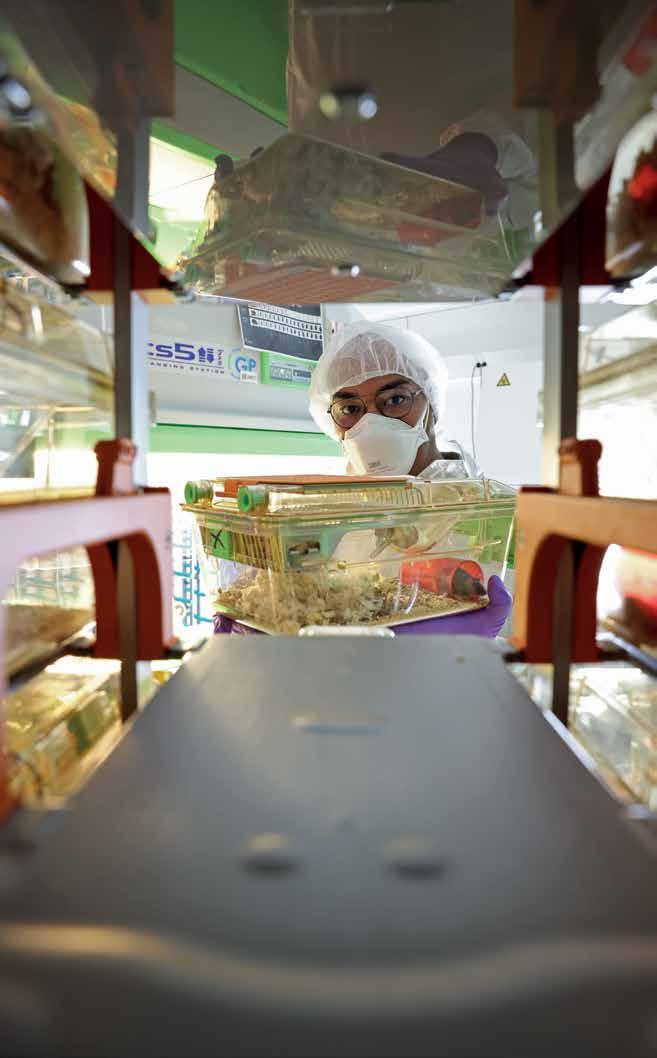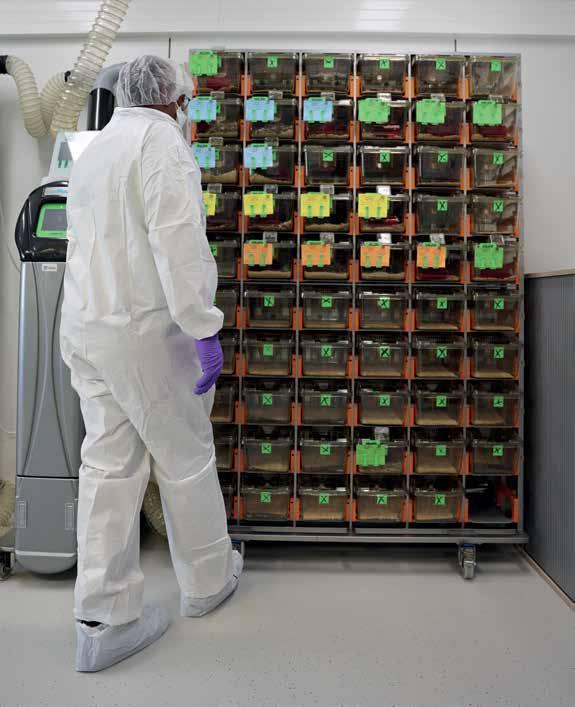
2 minute read
Watching over mice 24/7
In 2022, the rodent platform of the LCSB invested in cages with an automated monitoring system. They allow for real-time tracking of mice without any interference with the animals’ routine. This new piece of equipment will contribute to research, optimise facility management and improve animal welfare.
The new cage rack installed over the summer has quite an array of functionalities. It holds 80 cages outfitted with 12 electrodes each. These sensors can monitor the animals’ movement around the clock. The system also tracks key parameters such as food and water levels. “With these cages, mice don’t have to be moved or require a chip, which is a huge advantage,” details Prof. Evan Williams, head of the Gene Expression & Metabolism group. “This way, we can collect data 24/7 without disturbing them.” The sensors use electromagnetic field technology. They detect movement based on changes in conductance as the animal passes over them. The data obtained open new possibilities for research, but this is not the only advantage of this novel system.
Advertisement
Dr Djalil Coowar, manager of the rodent platform, supervised its installation. He explains: “Any interference with the animals’ routine can have a lasting impact on their behaviour. By reducing human interaction to a minimum, these cages enhance animal welfare and help our facility to optimise protocols.” As an example, any anormal decrease in locomotion will be detected, allowing the technicians to identify a sick mouse faster. As the sensors measure the humidity level in each cage, they will also ensure that the bedding is only changed when needed. With no unnecessary handling, this system is beneficial for the animals. It reduces running costs as well: Less consumables are required and the workload can be streamlined.

It is now possible to conduct experiments without the animals ever having to leave the security of their cage. As a result, the researchers hope to reduce experimental variability caused by stress and improve reproducibility. The automation should also help to decrease bias linked to human interventions. Of course, the technology is quite new and researchers are still figuring out how to make the most of the vast amount of data it can produce. This is what Williams and doctoral researcher Besma Boussoufa are currently working on: “We want to test every aspect of the set-up at the LCSB and refine our understanding of the system before launching longitudinal studies.”
They compare data obtained in different cages and explore potential technical issues. “I am impressed with the system so far,” says Evan Williams. “We can clearly see the circadian rhythm of the mice on the graphs and we have made some interesting observations.” Comparisons between different mouse lines have started as well: two cohorts, comprising of normal mice and mice prone to obesity, are monitored day and night.
The results already show some distinctive patterns in their nocturnal activity and could bring new scientific insights. “Innovative hypotheses can be tested more readily from now on,” highlights Williams. “It will be easy to integrate this type of measurements in a project, encouraging exploratory research.” ¢











